Post by Abubakar Nur, undergraduate in Psychology pursuing an Interdisciplinary Neuroscience minor at Portland State University.
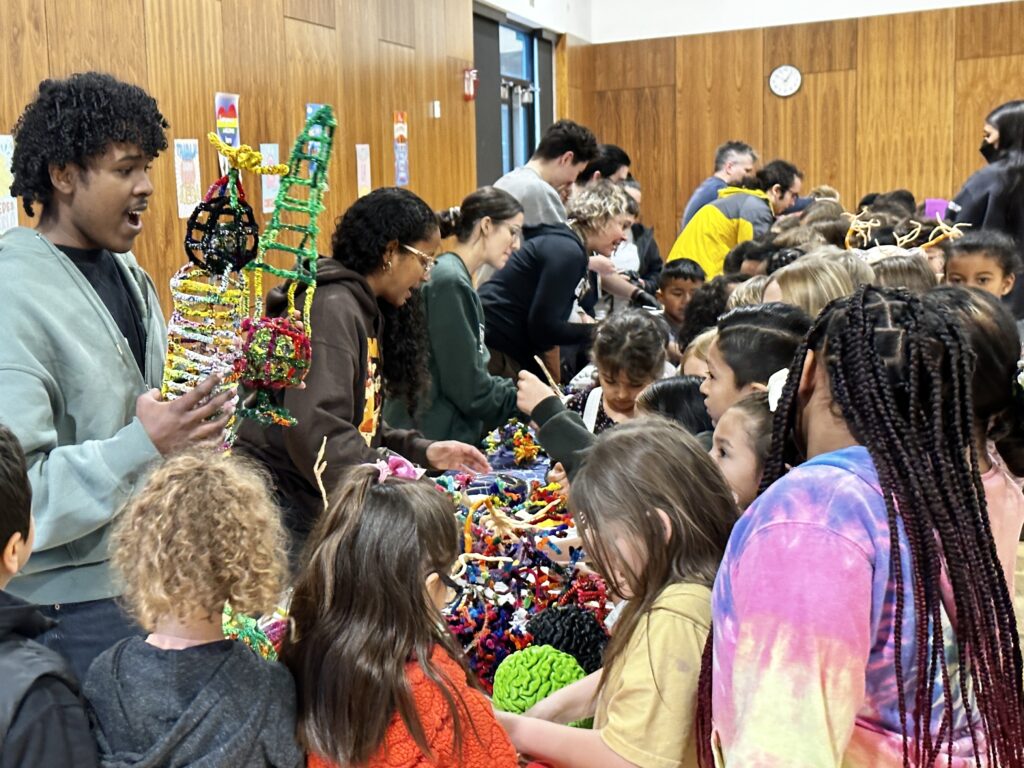
I’m an undergraduate at PSU, and I’m pursuing an interdisciplinary neuroscience minor.
This Halloween I joined my fellow undergrads, along with graduate students and scientists from the nearby Oregon National Primate Research Center, for a visit to Dr. Martin Luther King Junior Elementary School in Portland, Oregon. We were met by a crowd of superheroes, witches, TV characters and wild creatures who were eager to learn about the brain. They got to examine real cerebrums from various animals (there were incredible specimens from the ONPRC!) and even a few human noggins, too.
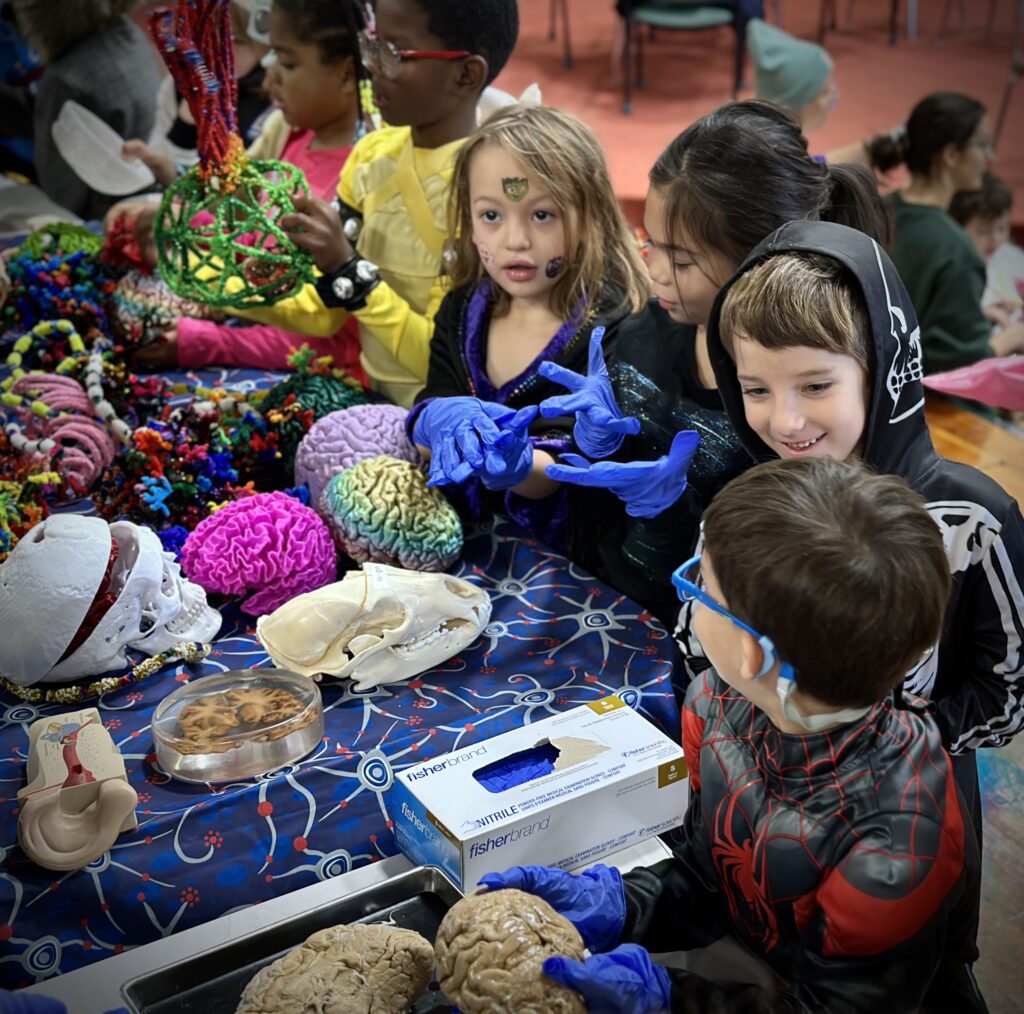
Is there a better day to explore brains than Halloween?
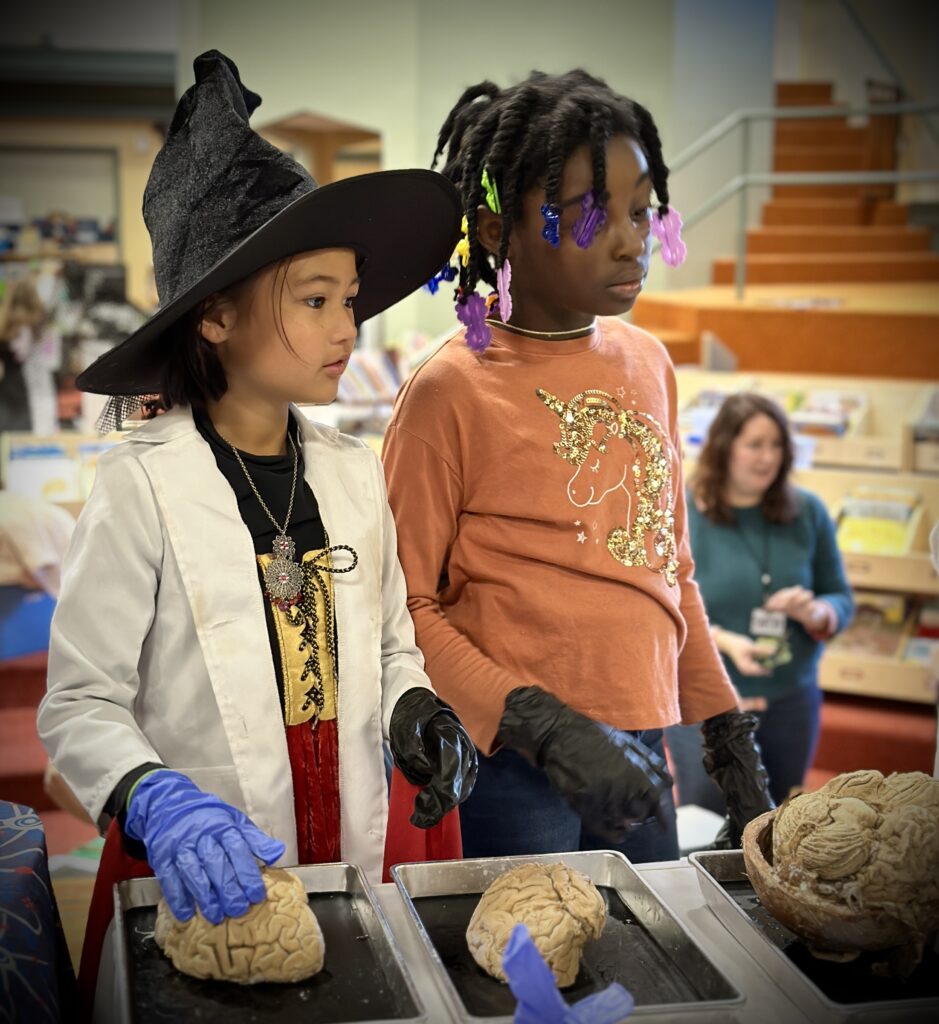
LEARN MORE: A Hippocampal Halloween
One thing that has stuck out to me from the outreach that I’ve been a part of is how different age groups and grade levels differ in their expressions of curiosity, critical thinking and knowledge.
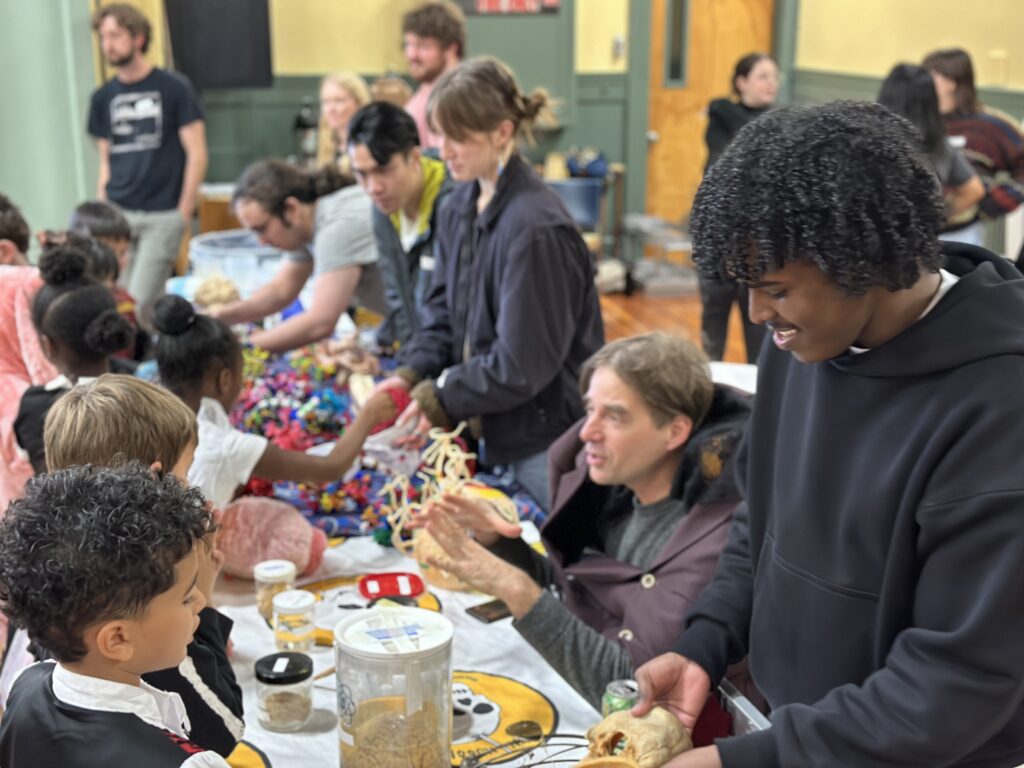
Elementary school provides just one example of the diversity of the human brain. As adults we forget the major leaps we make in brain development and cognition between the different grade levels.
Through outreach I’ve seen a huge difference between how a first grader and a fifth grader each think and act – but I’ve also encountered similar differences between two first graders. This diversity can be partly explained by ongoing research on the different effects that childhood experiences have on the changing brain being conducted by the Adolescent Brain Cognitive Development (or ABCD) study.
The ABCD study is one of the largest and longest studies on brain development in adolescents.
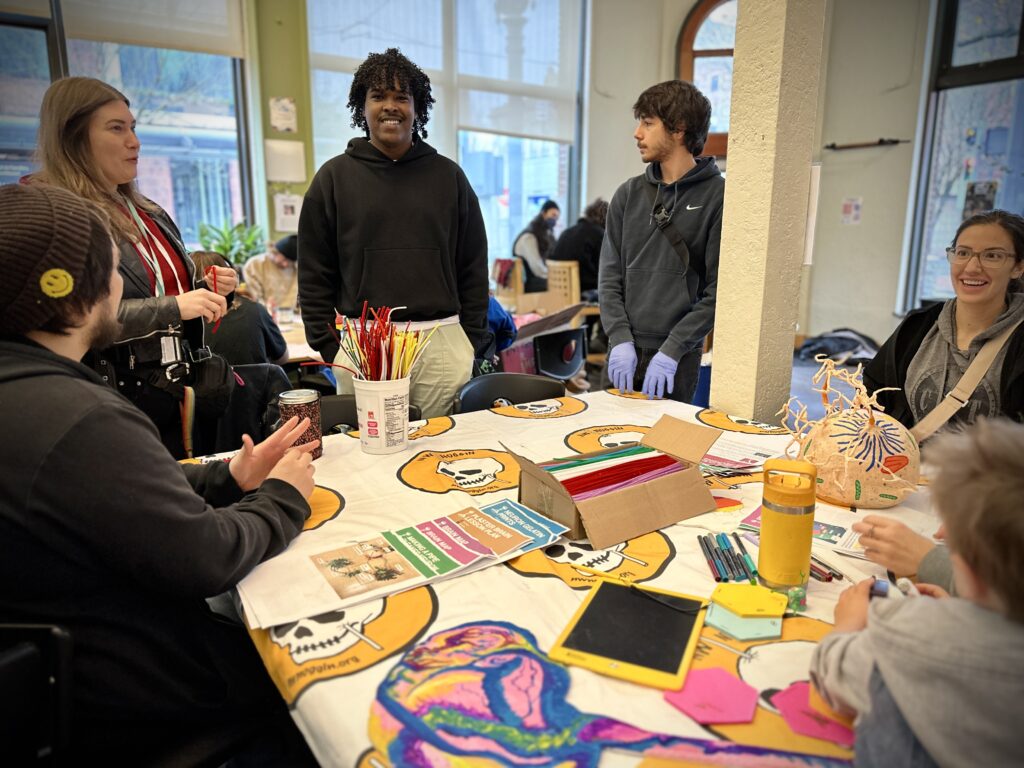
ABCD involves 21 research centers across the country (including OHSU) and active participation of over 11,000 children who started in the study at ages 9-10 and who are being tracked over ten years. ABCD is one of the greatest contributors to research on the development of adolescent brains.
The study involves tracking the biological (both structural and functional organization of the brain) and behavioral changes that participants experience as they reach young adulthood. ABCD not only focuses on how the brain changes in these participants but also examines the effects that stress, trauma, video games, social media, family life and other factors have on development. The objective of the study is to truly understand adolescent development, to encourage evidence-based educational policies and curriculum changes, and to develop resources to help promote healthy brain development.
ABCD, for example, has confirmed that sleep, social and emotional support and physical activity greatly contribute to healthier development of the brain. And specific DSM diagnoses, including ADHD and autism, can have different structural and functional underpinnings in the brain.
LEARN MORE: ABCD: About the study
LEARN MORE: Adolescent Brain Cognitive Development® Study (ABCD Study®)
LEARN MORE: A practical guide for researchers and reviewers using the ABCD Study and other large longitudinal datasets
LEARN MORE: Youth screen use in the ABCD® study
LEARN MORE: The subcortical correlates of autistic traits in school-age children: a population-based neuroimaging study
LEARN MORE: The DSM-5: Classification and criteria changes
Experiences play a part in the variability we see amongst children of the same age group. Genetics also contribute. But besides these observed differences within an age group, through outreach I also noticed a difference in the development of the brain and behavior between the different grade levels.
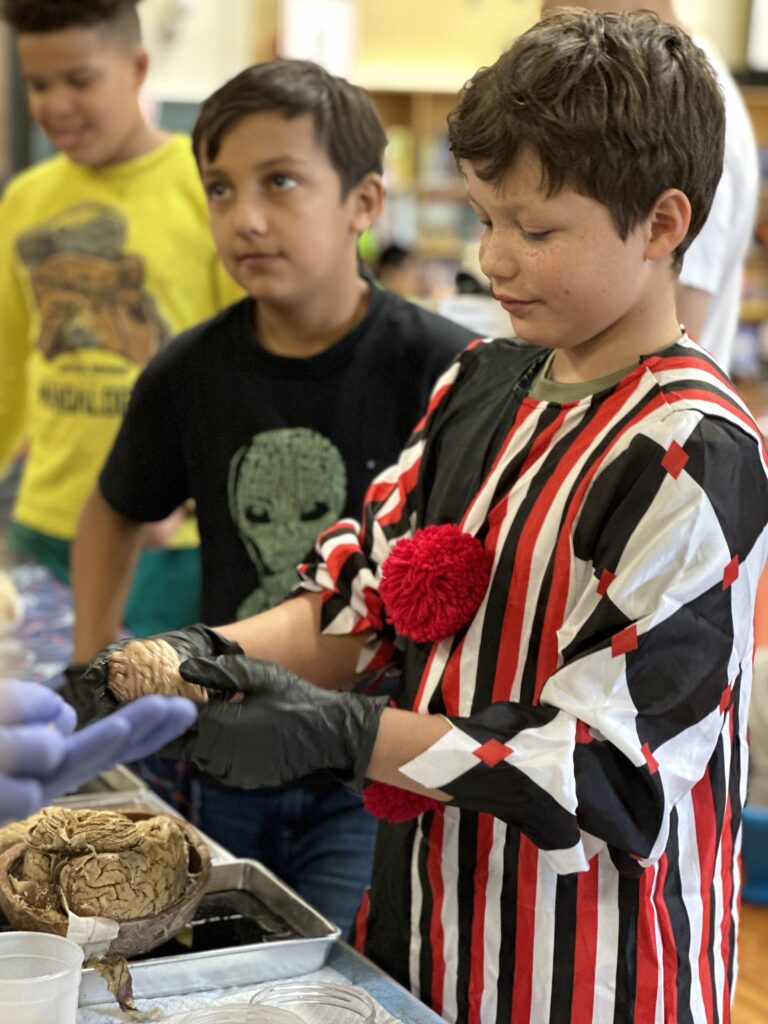
LEARN MORE: Genetic and Environmental Contributions to General Cognitive Ability Through the First 16 Years of Life
Why is that? What changes happen in brains that might account for all these differences I’ve seen?
Synaptogenesis: New synapses, new connections
Let’s start with kindergarteners, who possess such big brains for their small bodies. Do not underestimate this bunch because they will ask you logical questions such as “how does my brain know it’s night?” but will also ask “can you eat brains?” (That one is kind of a perfect question for Halloween!)

Most kindergartners are five years old which means that their brains are not even close to being fully developed. Brains continue developing until early adulthood which means there’s certainly room for improvement in the average kindergarten brain. Influential theories of child development hold that children’s brains develop in stages, with an important period spanning ages 2 to 7 years old.
LEARN MORE: Child Development and Early Learning
LEARN MORE: The developmental stages of L. S. Vygotsky and J. Piaget: A comparison
LEARN MORE: Cognitive Development
LEARN MORE: Piaget
During this time the number of synapses in the brain doubles because of the many new connections being formed, in a process known as synaptogenesis (the genesis or generation of new synapses).
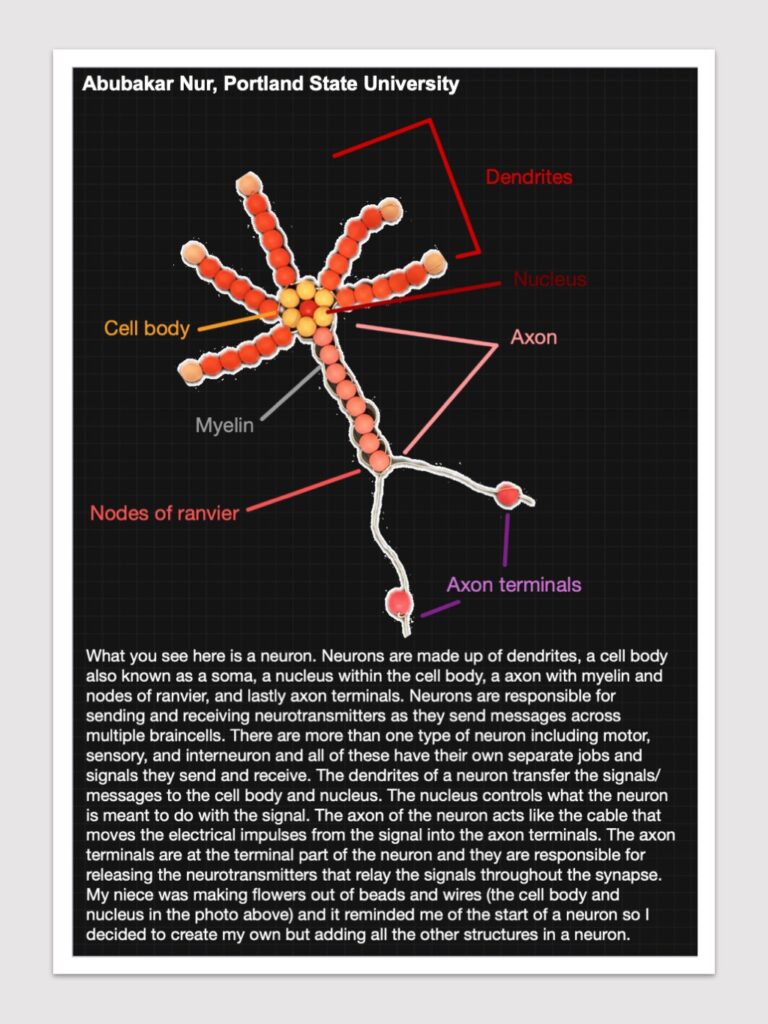
Synapses are connections between brain cells, including those known as neurons. There is a lot of synaptogenesis in early development! Our neurons grow many branches (known as dendrites) that sprout tiny projections (known as dendritic spines), creating lots of new surface area for additional synapses to form. We grow many new connections as new information and abilities are gained.
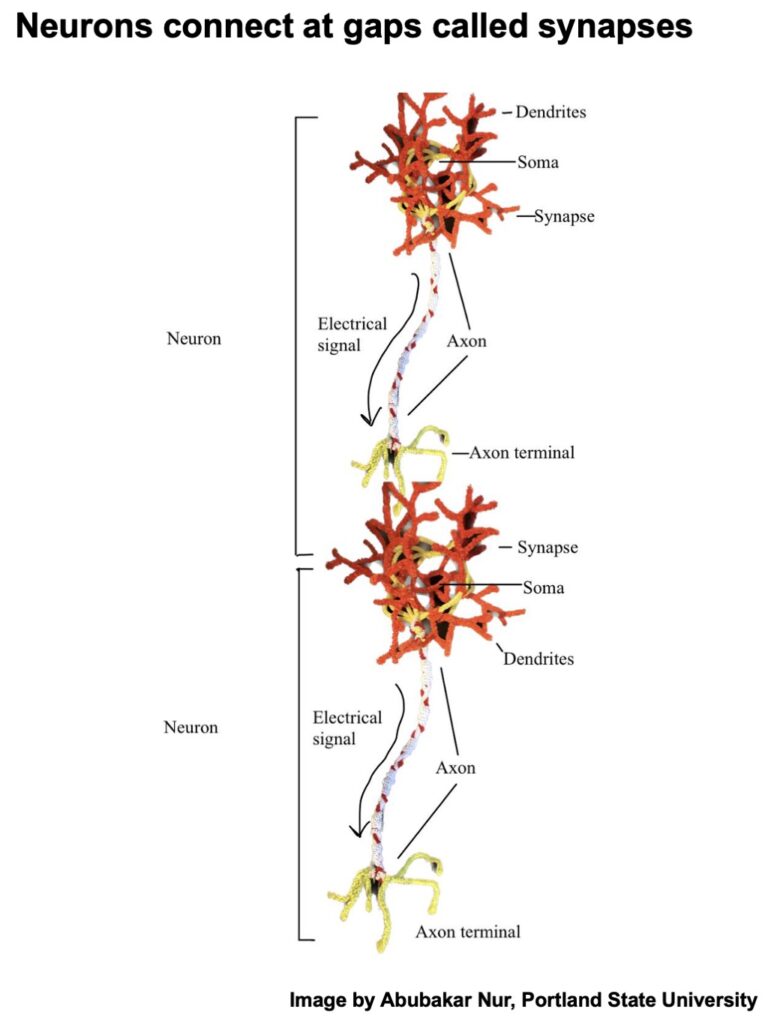
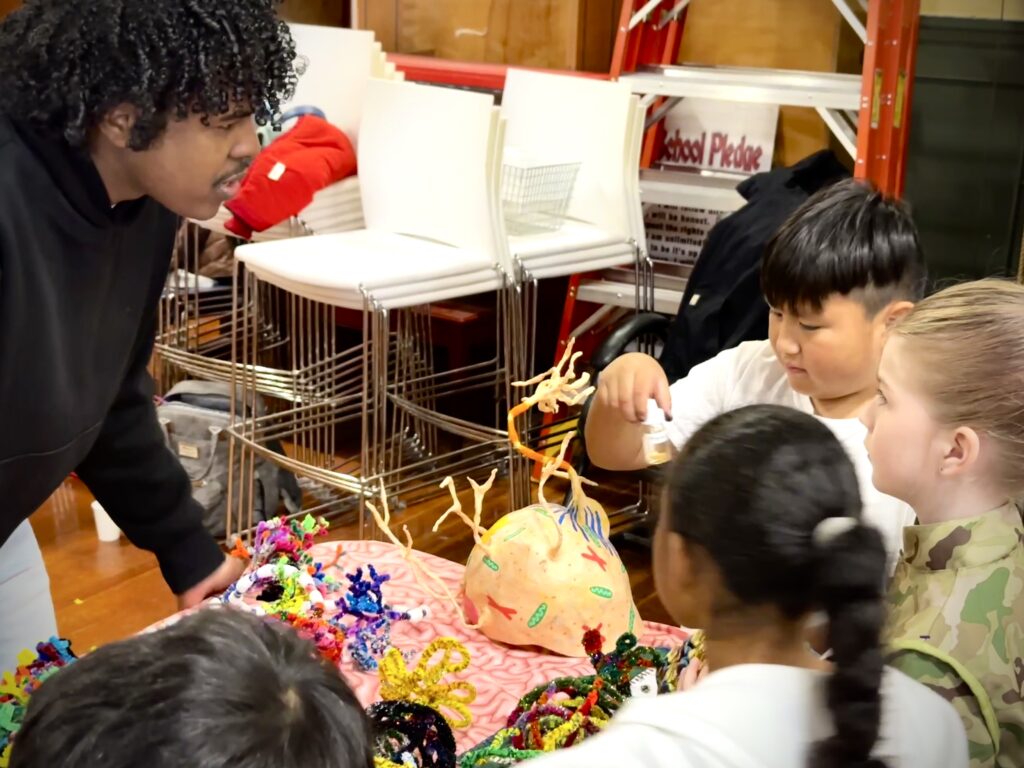
LEARN MORE: Brain Basics: The Life and Death of a Neuron
LEARN MORE: Dendritic Spine Initiation in Brain Development, Learning and Diseases
LEARN MORE: A Fragile Balance: Dendritic Spines, Learning, and Memory
LEARN MORE: Brain Basics: Know Your Brain
Synaptic pruning
Synaptic pruning also takes place during this time.
Synaptic pruning is the process by which the brain removes synapses (and sometimes entire neurons) it does not need anymore to make way for better and more effective neural connections and networks.
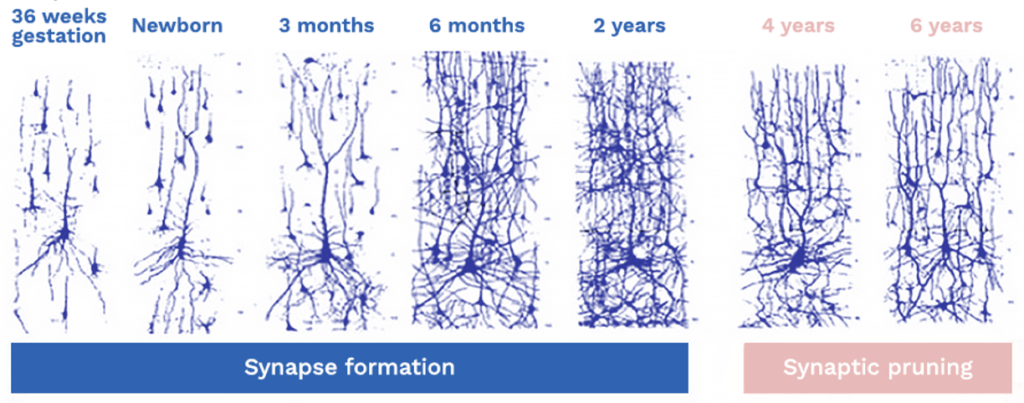
IMAGE SOURCE: Synaptic growth, synesthesia & savant abilities
The first and second graders I’ve met seem to be undergoing major behavioral changes during this critical period of brain growth. These two grade levels, mostly six and seven year olds, are experiencing the effects of all the new synapses formed during the last few years of their lives. Their brains are busy pruning back many connections, and strengthening others, to develop more effective networks. The life experiences and learning they’ve had has prepped their noggins to take on new challenges, like reading longer texts, counting money, math, grammar skills – and of course some basic neuroscience!
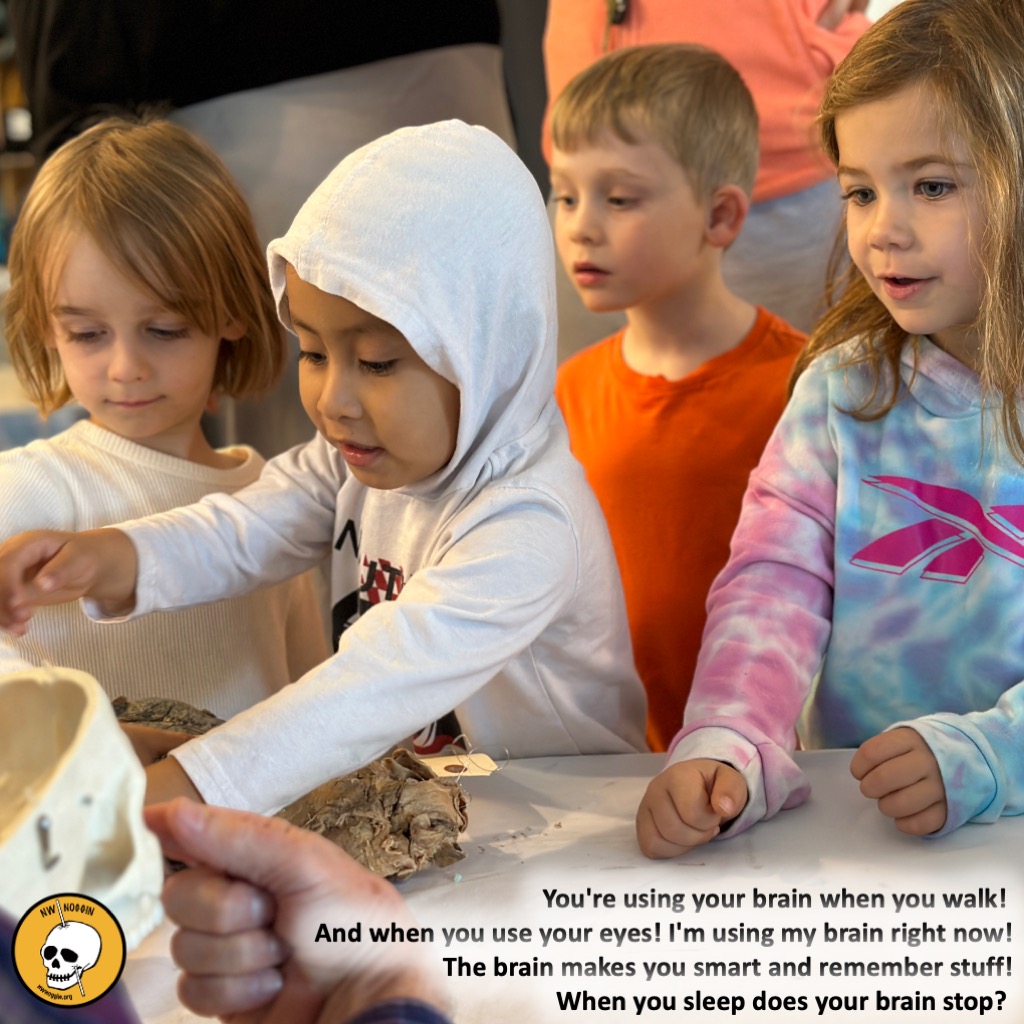
One of the major differences I saw in this age group was their improved ability to observe and follow directions, and ask more difficult questions. I took questions like “How does my brain know I stomped?,” “Can our brain die and how does our brain know that we died?” and “How do our ears hear sounds?”
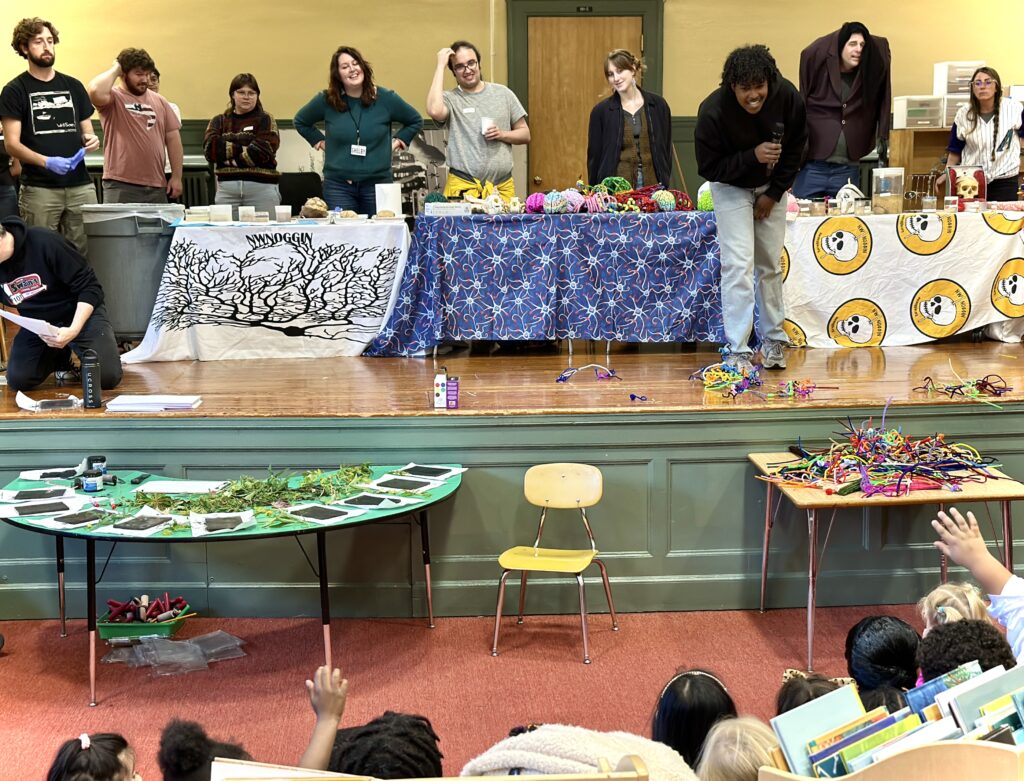
LEARN MORE: Core Concept: How synaptic pruning shapes neural wiring during development and, possibly, in disease
LEARN MORE: Adolescent Neurodevelopment
Myelin Matters
Third graders begin to show more logical thinking than their younger counterparts. They start to hit you with MUCH harder questions such as “How does my mind know I am in pain?” or “Why do I fall asleep?” or “How are memories formed?” This age group benefits from the major alterations, pruning and fine tuning in connections from their brains being challenged and changed during earlier grades.

One of the major changes the brain experiences during the early elementary years is the growth of longer range wiring between neurons situated across the brain. These wires (the axons of neurons) start getting wrapped in a substance called myelin (white matter). Myelin is the membrane of other brain cells known as glia. This type of myelinating glia extend their own membranes and wrap them around axons over and over. Myelin ultimately speeds up current in axons, so neurons can share information more quickly. This has major impact on perception, cognition and behavior.
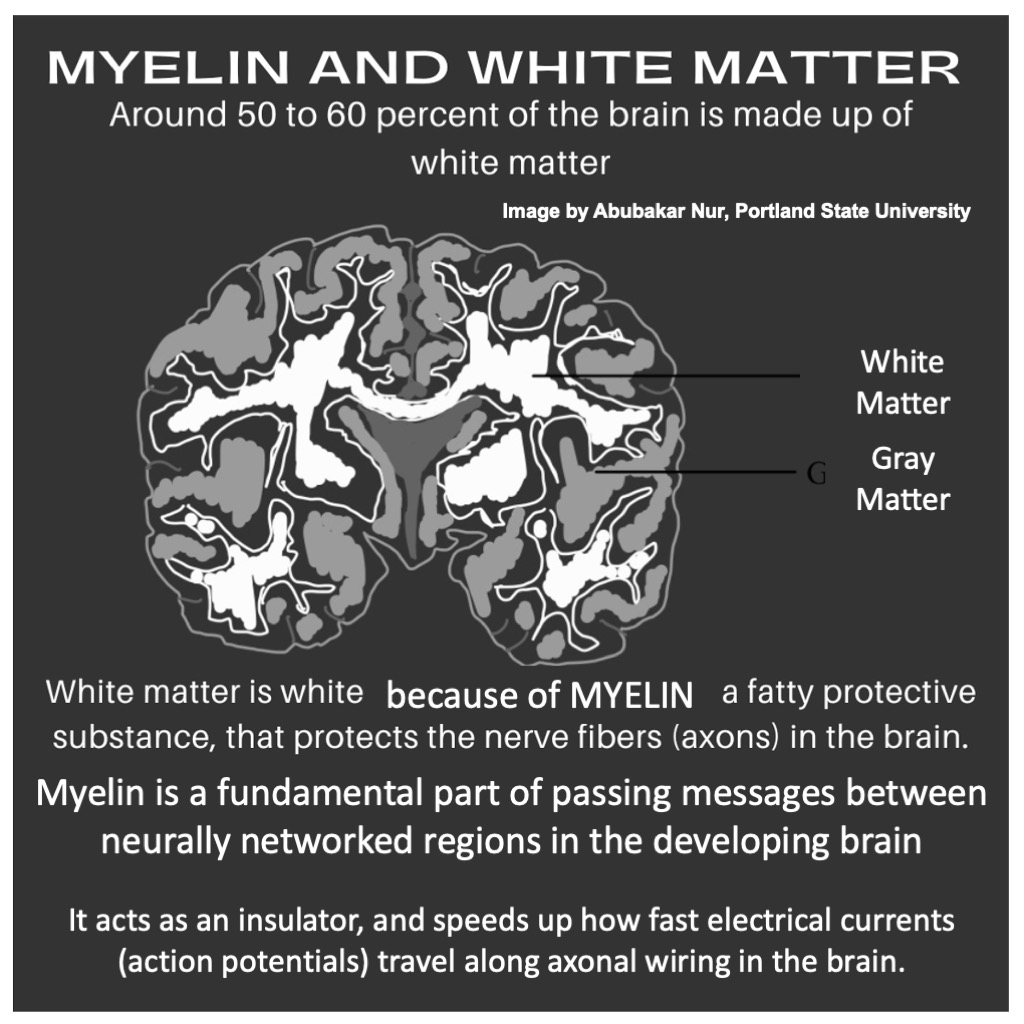
White matter (myelinated axons) is responsible for the transmission of information and allows for better functional coordination of developing networks of brain regions that allow for memory, attention, social decision making and other aspects of cognition. In third grade you start studying even more challenging topics which requires your brain to work harder and faster. Yet it also requires your brain to differentiate and know when to give a task or concept more attention or when to free up resources in the brain.
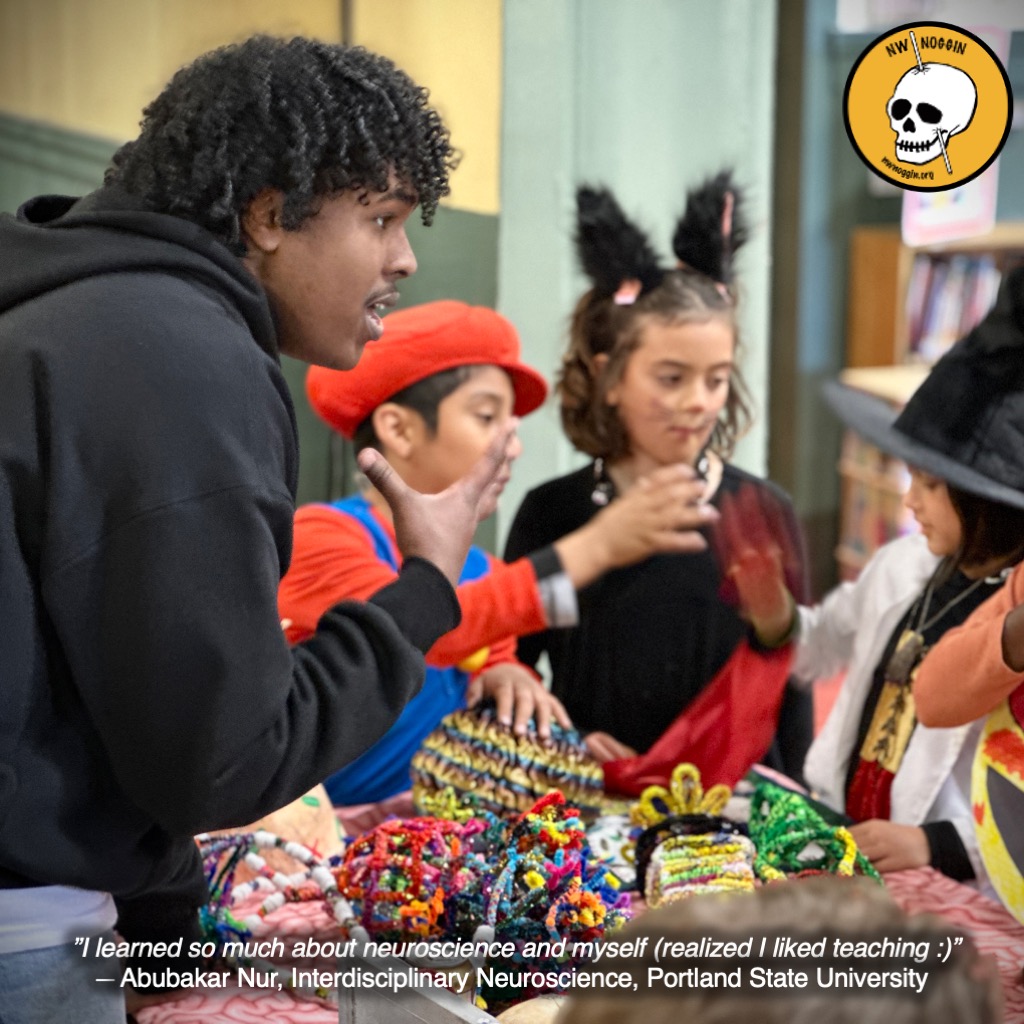
“As neural networks form, the child learns both academically and socially. At first, this learning is mostly rote in nature. As skills become more automatic, the child does not have to think as hard about what he or she is learning or doing, and brain resources are freed up to be used for complex tasks that require more and more attention and processing. Skills in reading, mathematics and writing become more specialized and developed.”
— American Psychological Association
The days of learning how to count money and basic addition and subtraction have passed. Third graders are studying fractions and decimals, punctuation, multiplication and division, as well as how to revise and edit sentences and short papers, topics that require more complex engagement to learn. The brain has acquired many abilities that no longer require direct conscious involvement, and kids can call on them implicitly, freeing up their attention to develop even more complicated skills.
LEARN MORE: Research in Brain Function and Learning
LEARN MORE: Developmental Biology of Myelin
LEARN MORE: Myelin development in cerebral gray and white matter during adolescence and late childhood
Fourth and fifth graders are taking on their final years of elementary school and at the same time are being met with more social pressures and fears. Their brains are more developed, neural connections and networks are getting established, and students are constantly challenged with new information.
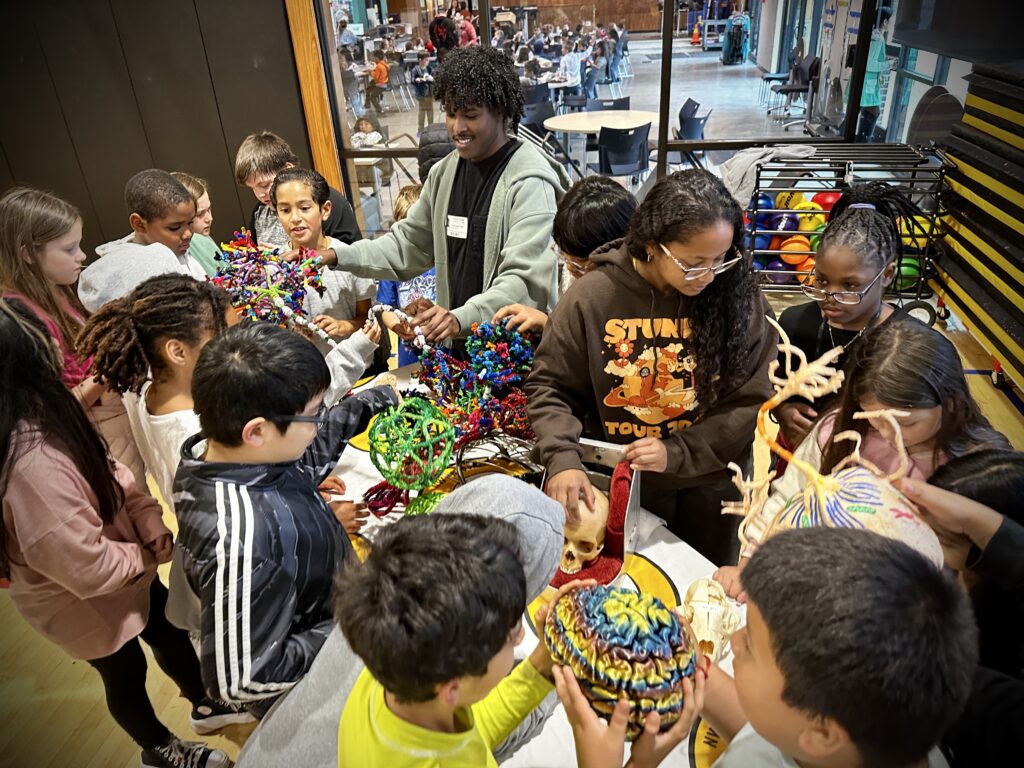
I found that all of these changes are easily seen in this age group, especially in their ability to relate new information to ideas and concepts that they’ve already learned.
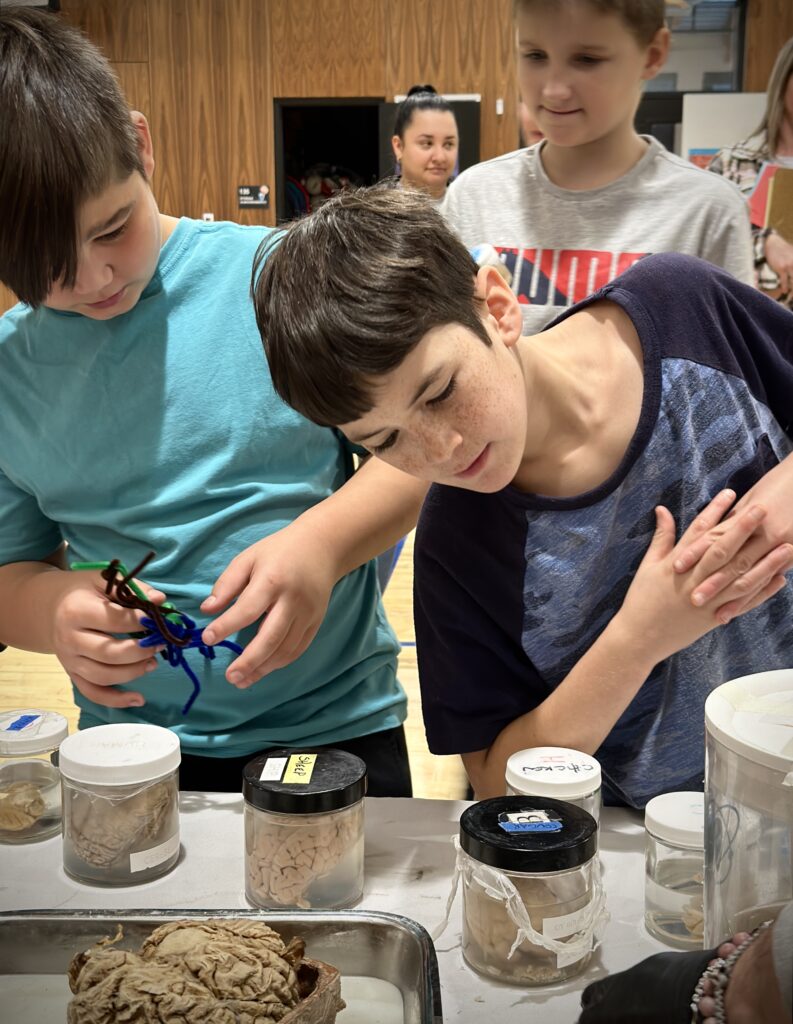
One fifth grader noticed the 3D printed heart on my table and proceeded to name all the different ventricles and point out the aorta. A fourth grader was explaining to me how the brainstem plays a vital role in our balance. A question we were asked by the previous grades was “Why is our brain pink?” which turned into “What’s the difference between the white and gray matter?” in the older age group.
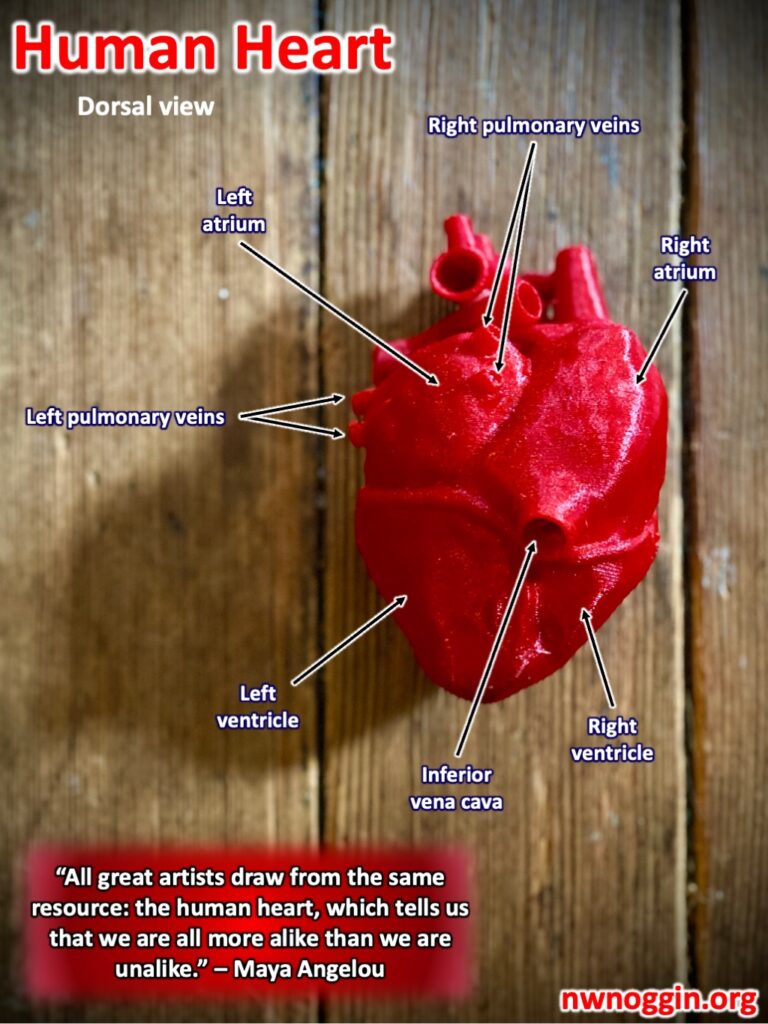
It was very apparent to me that the changes in brains during earlier grades had paid off and were now allowing the 4th and 5th graders to ask and explore more challenging concepts. These students are applying the habits and ideas they learned about in previous years as they enter the next chapter of their education. Their brains have begun relying on implicit skills, and more remote long term memories during this period to help them succeed.
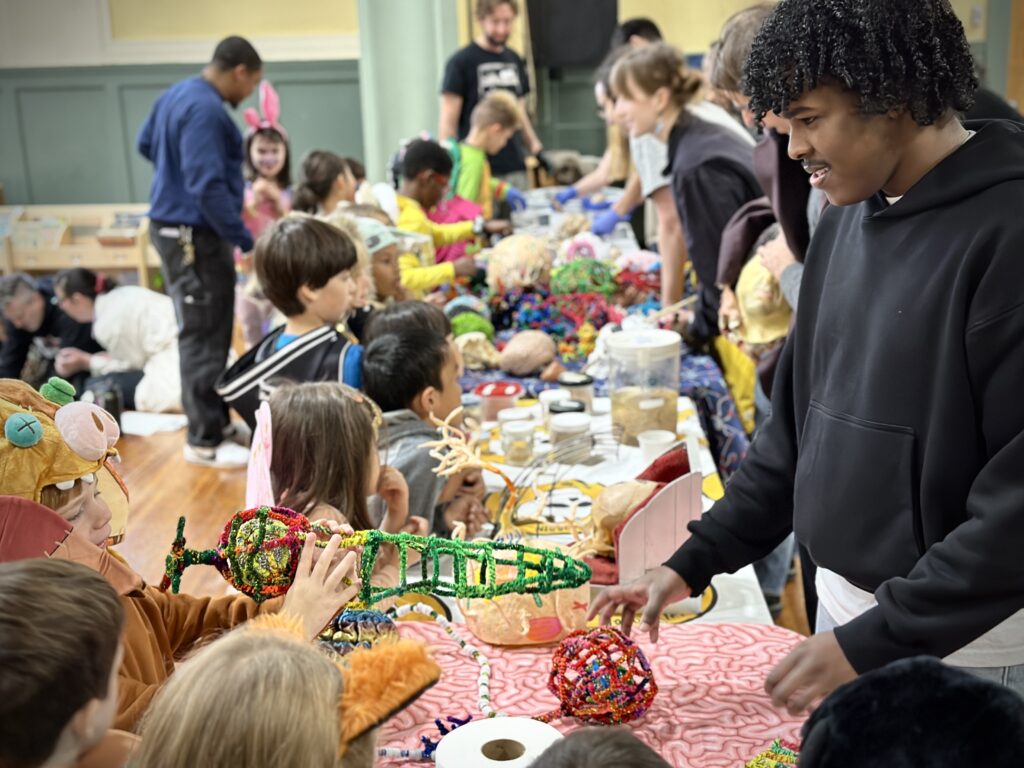
LEARN MORE: Cognitive neuroscience: the biology of the mind and findings and current opinion in cognitive neuroscience
LEARN MORE: Maturation of the adolescent brain
LEARN MORE: Age differences in short-term memory binding are related to working memory performance across the lifespan
There is always room for growth in the brain.
It’s amazing how much of this growth can be seen in elementary school.
Seeing first hand the leaps in understanding and cognitive development in young children as they go from one grade to the next has been incredible. As we get older we forget how much knowledge we have gained over the years and how the journey towards adulthood begins at this age. Our brains experienced synaptogenesis, synaptic pruning, myelination, and the acquisition of networks allowing us to attend, perceive, decide and remember. We may not recall the changes but we reap the benefits today.
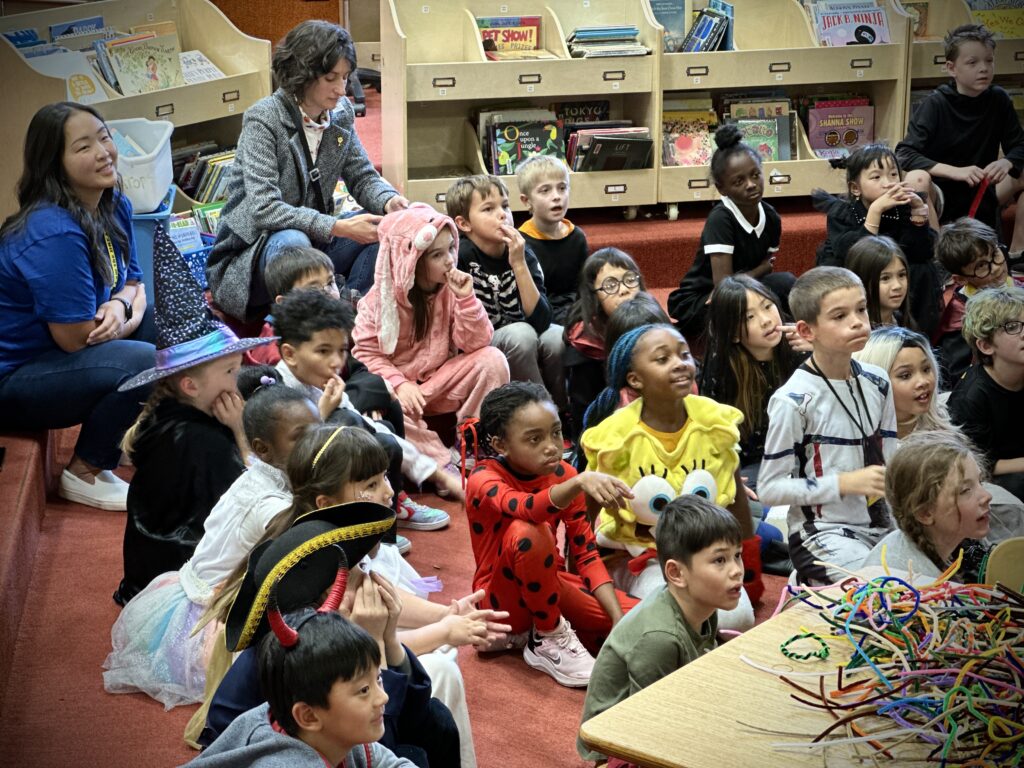
Every little thing you learn, any memory, experience, or challenge all affect how your brain develops. Facilitating environments for young children, including elementary students, to learn and develop their brains is one of the best things an adult can do for the younger generation.

I want to give a special thanks to NW Noggin and to the teachers, staff and kids at Dr. Martin Luther King Jr. School here in Portland for allowing me to be a part of this amazing opportunity to learn.


